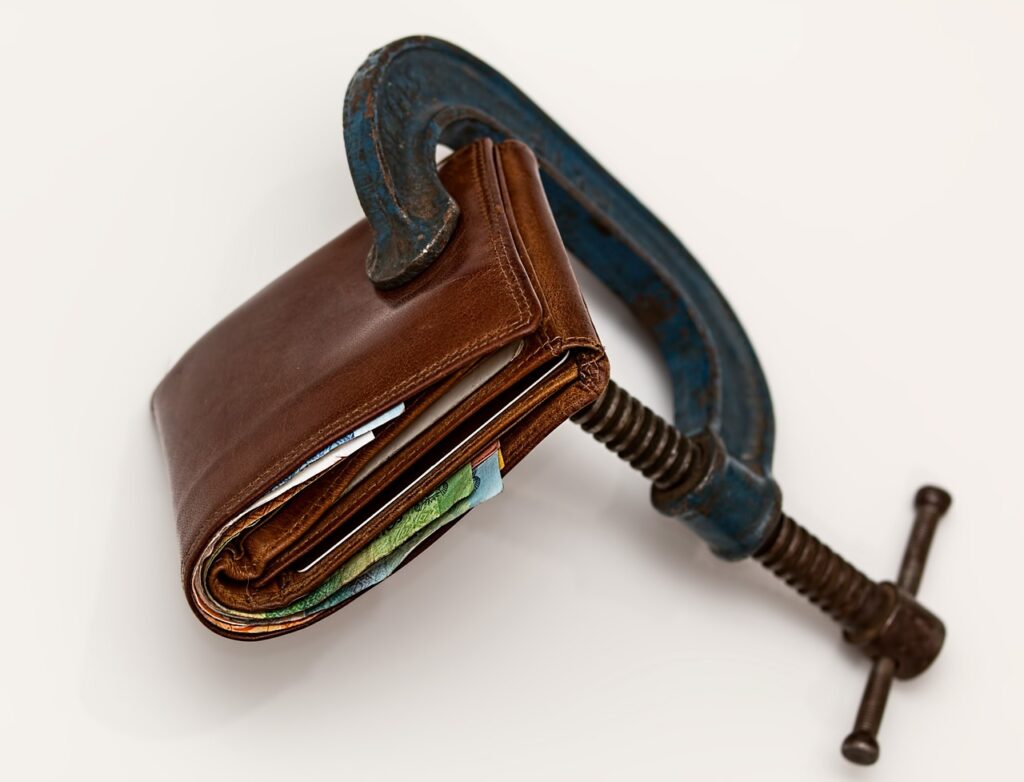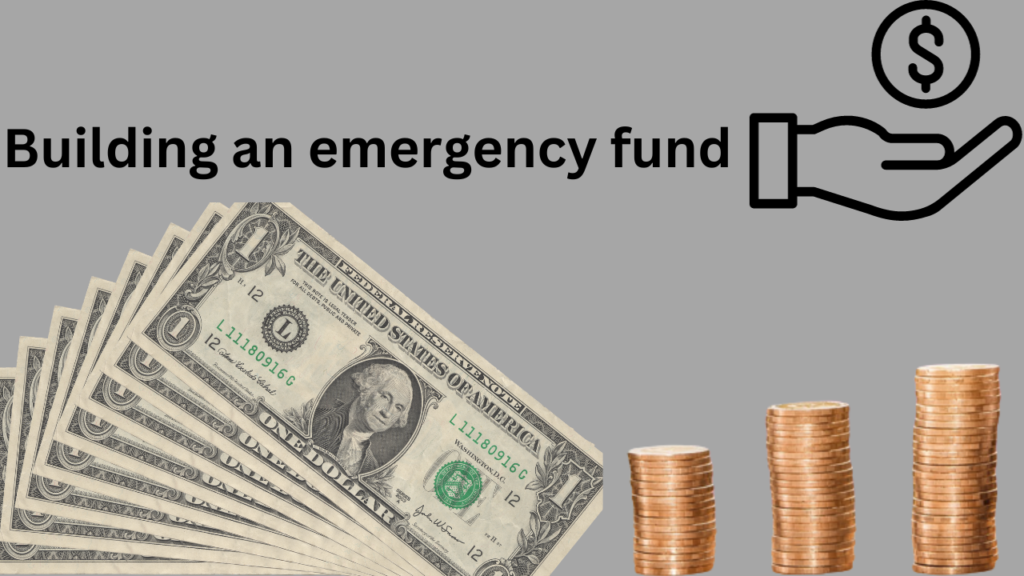1. Introduction
A. The Importance of Effective Budgeting
Budgeting is the backbone of financial stability. It’s the roadmap to achieving your financial dreams. Without it, you’re essentially driving blindfolded, hoping to reach your destination. In this blog post, we’ll show you how to budget like a pro and save smarter, empowering you to make informed financial decisions and secure your future.
B. Setting the Stage for Financial Success
Before we delve into the nitty-gritty of budgeting, it’s essential to understand your financial situation. The first step towards financial success is acknowledging where you currently stand and where you want to be. Let’s get started!
II. Understanding Your Financial Situation
A. Assessing Your Current Financial State
1. Calculate Your Income

Image by Steve Buissinne from Pixabay
To create a budget, you need to know how much money you have to work with. Start by adding up all sources of income, including your salary, freelance work, rental income, and any other inflows. This is your financial foundation.
2. List Your Expenses
On the other side of the equation, you have your expenses. These are the costs that you incur regularly. Understanding where your money goes is vital for successful budgeting. We’ll show you how to track and categorize these expenses.
B. Identifying Financial Goals
1. Short-Term vs. Long-Term Goals
Financial goals can be short-term, like saving for a vacation, or long-term, like buying a house or retiring comfortably. It’s essential to have a mix of both so you can enjoy life now while securing your future.
READ: Smart Ways to Save Money Every Month: 15 Proven Tips for Financial Success
2. Prioritizing Goals
Not all goals are created equal. Some are more urgent, while others are more aspirational. Prioritizing your goals ensures you allocate your resources effectively.
III. Creating a Realistic Budget
A. Defining Your Budget Categories
1. Fixed Expenses
Fixed expenses are regular, unchanging costs like rent or mortgage payments, insurance, and loan repayments. They’re the constants in your budget.
2. Variable Expenses
Variable expenses include things like groceries, entertainment, and dining out. They’re more flexible and can be adjusted as needed.
3. Savings and Investments
Saving and investing are critical components of your budget. They ensure you’re growing your wealth and building financial security.
B. Allocating Funds Appropriately
1. The 50/30/20 Rule
The 50/30/20 rule is a simple guideline for budgeting. It suggests allocating 50% of your income to needs, 30% to wants, and 20% to savings and debt repayment.
2. Tailoring Budget to Personal Needs
While the 50/30/20 rule is a great starting point, your budget should be customized to your unique circumstances. We’ll guide you on how to adapt it to fit your life.
IV. Tools for Budgeting
A. Utilizing Budgeting Apps and Software
1. Popular Budgeting Apps
There’s a wealth of digital tools available to help you budget effectively. We’ll introduce you to some popular budgeting apps that make the process smoother.
2. Benefits of Digital Tools
Discover the advantages of using budgeting apps and software, such as real-time tracking, goal setting, and automatic expense categorization.
B. Manual Budgeting Methods
1. Excel Spreadsheets

image source: Microsoft Excel
If you prefer a more hands-on approach,
Here are step-by-step instructions on how to create a basic budget in Excel.
Step 1: Open Excel and Create a New Workbook
- Open Microsoft Excel.
- Click on “File” or the Office button (depending on your Excel version).
- Select “New” to create a new workbook.
Step 2: Choose a Budget Template (Optional)
If you’re not comfortable starting from scratch, you can use an Excel budget template. Here’s how:
- In the “New” tab, search for “budget” or “finance” in the search bar.
- Browse through the available templates and choose one that suits your needs. Microsoft offers several pre-made budget templates.
- Double-click on the template to open it.
Step 3: Set Up Your Budget Worksheet
If you’re starting from a blank workbook, follow these steps:
- Click on the “Insert” tab.
- Select “Table.” A dialog box will appear.
- Ensure that the “Create Table” box has a checkmark next to “My table has headers” (this allows you to name your columns).
- Click “OK.”
Step 4: Create Budget Categories
In your Excel budget, you’ll need categories for income and expenses. Here are some common categories:
Income:
- Salary
- Rental income
- Freelance income
- Other
Expenses:
- Housing (e.g., rent or mortgage)
- Utilities (e.g., electricity, water, internet)
- Transportation (e.g., gas, public transit)
- Food and Groceries
- Entertainment
- Health and Insurance
- Savings
- Debt Payments
- Miscellaneous
Enter these categories in your table, making sure to use one column for each.
Step 5: Input Your Data
- In the appropriate columns, enter the estimated or actual values for each category.
- For the “Income” categories, enter your expected income for the month.
- For the “Expenses” categories, input your expected or actual expenses.
Step 6: Calculate Totals and Balances
In Excel, you can easily calculate totals and balances using formulas. Here’s how to do it:
- In the row below your income and expense entries, create formulas to calculate totals.
- For the “Total Income,” use the formula
=SUM(YourIncomeRange). - For the “Total Expenses,” use the formula
=SUM(YourExpenseRange). - For “Balance,” subtract “Total Expenses” from “Total Income.”
- For the “Total Income,” use the formula
Step 7: Visualize Your Data (Optional)
To make your budget more informative, you can create charts or graphs to visualize your income, expenses, and balance. Here’s how:
- Select your data, including the categories and totals.
- Go to the “Insert” tab and choose a chart type (e.g., a pie chart for expenses or a column chart for income and expenses).
- Customize your chart as needed.
Step 8: Track and Update Your Budget
Regularly update your budget with actual income and expenses. As the month progresses, input the actual figures and adjust your budget accordingly.
Creating and maintaining a budget in Excel can help you manage your finances effectively, track your spending, and make informed financial decisions. The key is to stay consistent and keep your budget up to date.
2. Envelope System
The envelope system is a cash-based budgeting method that’s particularly useful for curbing overspending. Learn how to set it up and stick to it.
V. Tracking Your Spending

A. Importance of Expense Tracking
Tracking your expenses is like a reality check for your budget. It helps you identify where your money is really going.
B. Implementing Effective Expense Tracking
1. Recording Every Expense
Keeping a record of every expense, no matter how small, is crucial. We’ll provide tips on making this habit stick.
2. Reviewing and Analyzing Spending Habits
Once you’ve tracked your expenses, it’s time to analyze the data. This step is where you can identify patterns, discover opportunities for savings, and make informed decisions.
VI. Reducing Unnecessary Expenses

Image by Steve Buissinne from Pixabay
A. Identifying and Eliminating Financial Leaks
Financial leaks are the sneaky expenses that slowly drain your resources. We’ll show you how to identify and plug these leaks.
B. Cutting Back on Non-Essential Spending
1. Dining Out Less
Eating out is a significant budget buster. We’ll provide tips on how to enjoy dining out while still saving money.
2. Canceling Unused Subscriptions
Subscription services can add up quickly. We’ll guide you through the process of identifying and eliminating unnecessary subscriptions.
3. Saving on Utilities
Utilities are essential but can often be optimized for savings. Discover practical ways to reduce your utility bills.
VII. Building an Emergency Fund

Image source: made in Canva
A. Why You Need an Emergency Fund
An emergency fund is your financial safety net. It provides peace of mind and protection against unexpected expenses.
B. Strategies for Building One
1. Setting Monthly Savings Goals
We’ll help you determine how much you need in your emergency fund and how to break it down into achievable monthly goals.
2. Automating Savings
Automation is a powerful tool for consistent saving. Learn how to set up automatic transfers to your emergency fund.
VIII. The Art of Smart Shopping
A. Making a Shopping List
A shopping list is a budget-conscious shopper’s best friend. We’ll discuss the art of creating an effective list.
B. Avoiding Impulse Purchases
Impulse purchases can wreck even the most well-planned budget. Discover strategies to resist the temptation.
C. Utilizing Coupons and Cashback Offers
Find out how to take advantage of coupons and cashback offers to save money on your purchases.
IX. Comparison Shopping
A. Benefits of Comparison Shopping
Comparison shopping is a savvy consumer’s secret weapon. We’ll explain why it’s worth the effort.
B. Tools for Effective Comparison Shopping
1. Online Price Comparison Websites
Online price comparison websites simplify the process of finding the best deals. We’ll introduce you to some top options.
2. Mobile Apps
Mobile apps make comparison shopping even more convenient. We’ll showcase some apps to help you save money on the go.
X. Negotiating and Bargaining
A. Haggling for Better Deals
Negotiating can save you substantial money on big-ticket items. We’ll provide tips for successful haggling.
B. Negotiating for Lower Bills
1. Cable and Internet Providers
Learn how to negotiate with cable and internet providers to secure lower bills.
2. Credit Card Interest Rates
Negotiating for lower credit card interest rates can save you money and help you get out of debt faster.
XI. Using Credit Cards Wisely
A. Understanding Credit Card Terms
Understanding the terms and conditions of your credit cards is essential for responsible usage.
B. Benefits of Responsible Credit Card Usage
When used correctly, credit cards offer several benefits, including cashback rewards, travel perks, and building credit. We’ll discuss how to maximize these advantages while avoiding the pitfalls.
XII. Managing Debt
A. Strategies for Paying Down Debt
1. Snowball Method
The snowball method involves paying off your smallest debts first, providing a psychological boost as you see progress.
2. Avalanche Method
The avalanche method focuses on paying off high-interest debts first to minimize interest costs over time.
B. Consolidation Options
Consolidating your debt can make repayment more manageable. We’ll explore various consolidation methods and their pros and cons.
XIII. Increasing Your Income
A. Side Hustles and Part-Time Work
Discover creative ways to increase your income with side hustles and part-time work.
B. Investing for Passive Income
Investing in income-generating assets can provide a steady stream of money without additional work. We’ll introduce you to some beginner-friendly investment options.
XIV. Revisiting and Adjusting Your Budget
A. The Importance of Regular Budget Reviews
Your life and financial situation are constantly changing. Regular budget reviews ensure your budget remains aligned with your goals.
B. Modifying Your Budget When Necessary
Learn when and how to adjust your budget to accommodate life changes and financial goals.
XV. Building Credit and Saving Money
A. How Good Credit Saves You Money
Good credit opens doors to favorable interest rates and opportunities for savings. We’ll explain why credit is essential.
B. Strategies for Building and Maintaining Good Credit
We’ll provide tips for building and maintaining a strong credit profile.
XVI. Emergency Preparedness
A. Creating a Financial Emergency Plan
An emergency plan ensures you’re prepared for unexpected financial crises.
B. Ensuring Adequate Insurance Coverage
The right insurance coverage can protect your finances in times of trouble. We’ll help you assess your insurance needs.
XVII. Frequently Asked Questions (FAQs)
A. How do I create a budget that suits my lifestyle?
Your budget should be tailored to your unique circumstances. We’ll provide guidance on how to make a budget that works for you.
B. What’s the best way to track daily expenses?
Tracking daily expenses can be straightforward with the right tools and methods. We’ll share some effective techniques.
C. How can I start saving on a tight budget?
Even with a tight budget, saving is possible. We’ll show you how to prioritize and maximize your savings.
D. What are the most common budgeting mistakes to avoid?
Budgeting mistakes can hinder your financial progress. We’ll highlight common missteps and how to avoid them.
E. How can I increase my income without taking on a second job?
Increasing your income doesn’t always require a second job. We’ll provide creative income-boosting ideas.
F. What are some smart investment options for beginners?
New to investing? We’ll introduce you to beginner-friendly investment options and strategies.
G. How can I negotiate my bills effectively?
Negotiating bills is a valuable skill. We’ll walk you through effective negotiation techniques.
H. What’s the difference between good debt and bad debt?
Understanding the difference between good and bad debt is crucial for making informed financial decisions.
I. How do I build an emergency fund from scratch?
Starting from scratch? We’ll guide you on building an emergency fund step by step.
J. What are some tips for avoiding credit card debt?
Credit card debt can be a trap. We’ll provide tips on avoiding this common financial pitfall.
XVIII. Conclusion
A. Summarizing the Key Takeaways
In conclusion, effective budgeting is the key to financial success. By understanding your financial situation, setting goals, and following our 25 tips, you’ll be well on your way to a secure financial future.
B. Encouraging Readers to Begin Their Financial Journey
We encourage you to take action now. The journey to smarter saving and spending begins with the first step – creating a budget.
XIX. Additional Resources
A. Recommended Books
If you want to dive deeper into personal finance, here are some books that can help you master budgeting and financial management.
B. Online Tools and Websites
Discover online resources and tools that can further support your financial journey. From budgeting calculators to investment platforms, these websites can be invaluable resources.
Start your journey towards financial success today. Budget like a pro, and watch your financial dreams become a reality.





